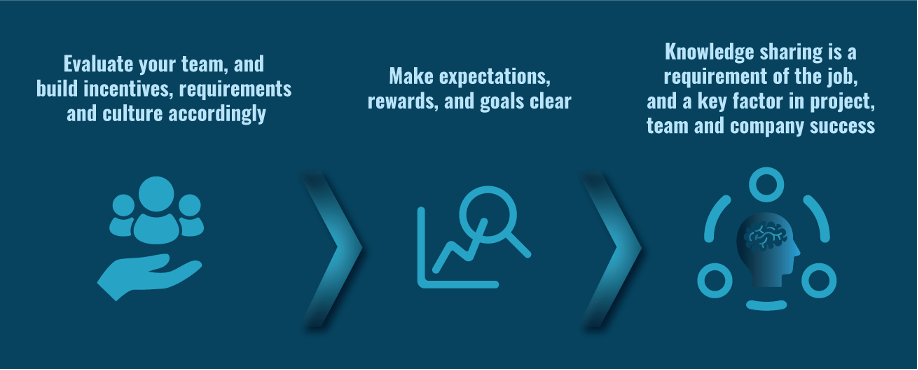Leveraging your organization’s knowledge can give you a highly competitive edge

Contributor: Kyle Hudson, P.E.; Vice President, Operations; VIATechnik LLC
Think about your most experienced, valuable and productive project team today. What if you had them on every project all the time?
Owners are demanding high-quality, on-time delivery and tighter control of costs consistently across all projects, phases and regions. We’re familiar with the concept of A-teams and B-teams, home runs and strikeouts, good projects and bad projects. But consistent delivery across boundaries means all your teams and projects must have readily available and actionable access to your firm’s most trusted, experienced and successful knowledge sources. As they say, the strength of a chain is limited to the weakest link in that chain.
In practice, design-build teams that digitally retain and distribute knowledge at scale are the ones that can produce uniform A-team results, differentiate themselves, save time and deliver the consistency Owners demand.
So, how are we doing as an industry today? Unfortunately –– not great.
Why are knowledge sharing and consistent project delivery difficult?
We see three primary challenges to knowledge sharing within the design-build industry. The first two challenges are often encountered simultaneously during knowledge collection. The third challenge awaits those who have made progress on collection and are attempting to create real value from their data.

- Proliferation of project-specific digital tools: Over time, we’ve adopted digital tools as an industry that are laser-focused on an individual’s specific role in project delivery, rather than consistent delivery across people and project boundaries. These tools create digital silos where data is effectively being logged into a dead-end knowledge base. They promote problem solving but with a narrow lens. The contents of the silos and corresponding insights remain all but inaccessible to a select few.
- Data extraction is painful: Our knowledge is scattered in RFI’s, field reports, plans, models, punch lists, markups, specifications, program documents and more. Large design-build projects generate tens of thousands of data points in these artifacts. Not all data is knowledge, and not all knowledge needs to be extracted necessarily. So, data extraction patterns may look quite different from one artifact to another.
- Making knowledge actionable and scalable is tricky: Forward-thinking design-builders that have been able to trailblaze through challenges 1 and 2 must then figure out how to make their captured knowledge actionable, usable and scalable across an entire organization and all its projects. Simply capturing data leaves us with the following unanswered questions: How can we make our knowledge proactive or predictive? How do we stream knowledge to systems where team members need it most? How do we make sure not to overwhelm our people with too much knowledge or the wrong kind of knowledge? These three questions involve people, process and technology which makes them inherently complex for large organizations to solve.
How Can Design-Build Teams Make Progress?
The good news is these challenges can be overcome. Based on our experience, we’ve developed five tips for organizations looking to fully realize their potential and make knowledge sharable and actionable.

- Understand the difference between project data and corporate knowledge: Not all project data has a life beyond the project. We must build robust workflows and processes to separate project-centric artifacts from valuable lessons learned.
- Embrace digital transformation’s role in knowledge retention: Given the enormity of the data sets we’re dealing with, there’s no question that technology plays a major role in the solution. The selected technology(s) must leverage intelligence, automation and smart systems to find and share knowledge with a primary goal of breaking down barriers to knowledge reporting and knowledge consumption for project team members.
- Focus on making your knowledge actionable and predictive: Enable your people to be proactive. Building a large data repository won’t automatically yield adoption and improvement. Remember, knowledge must flow across projects, phases and regions to enable consistent delivery. Understanding your team’s culture of learning is key here.
- Think of knowledge sharing as a mission critical workflow: Evaluate your team and build incentives, requirements and culture accordingly. Make expectations, goals and rewards clear. Knowledge sharing is a requirement of the job and a key factor in project, team and company success.
- Consider Precogs from ViaTechnik: As a purpose-built predictive insights and learning platform for the AEC industry, Precogs enables design-build partners to grow, control and leverage their corporate knowledge repository and turn insights into action. With Precogs, you will empower your team members with highly actionable and available knowledge. Digital knowledge and checklists can be pushed to and pulled from Revit, Procore, SharePoint and more so knowledge is not only captured but also distributed efficiently. Owners and design-build partners can work in Precogs together to create AI-enabled digital knowledge repositories and actionable checklists, prevent problems before they occur and avoid making the same mistakes over and over.

